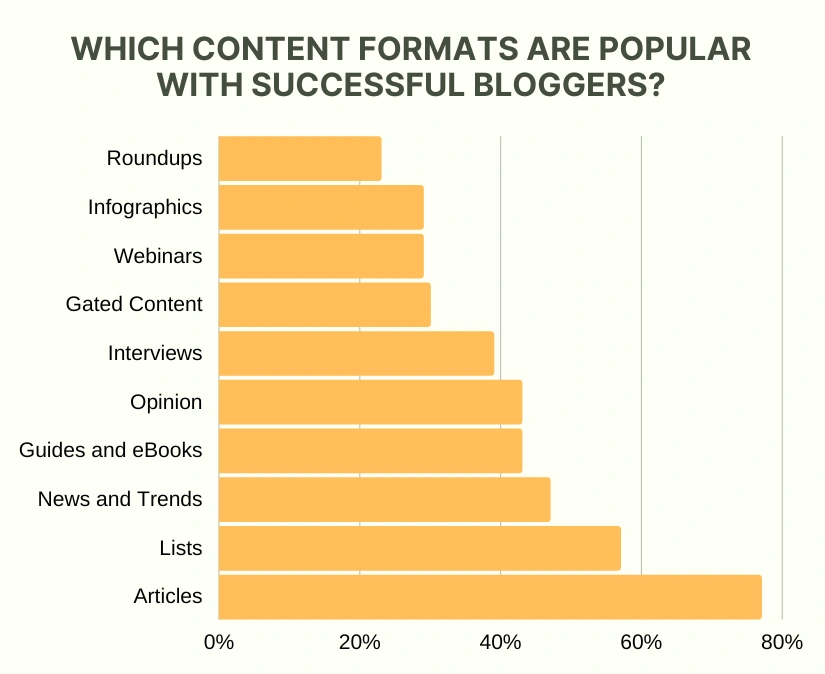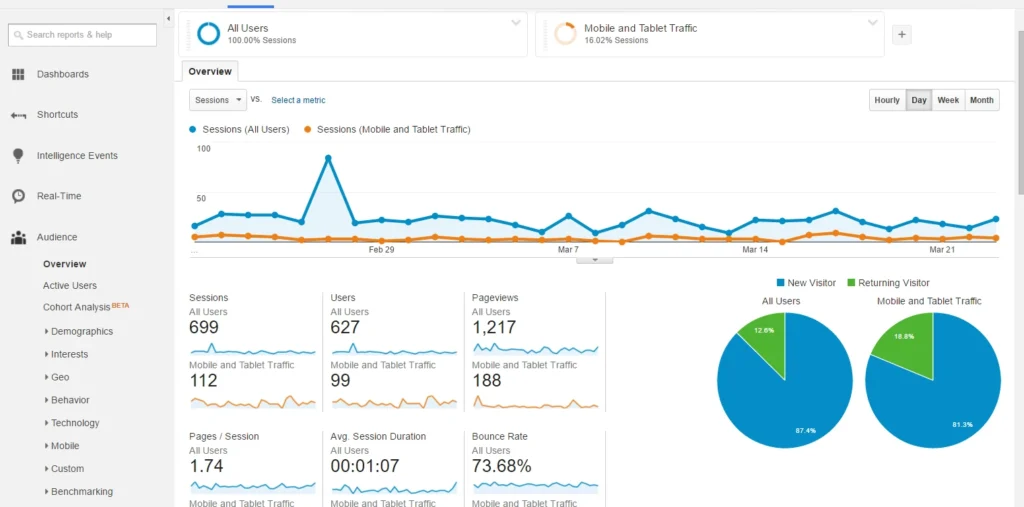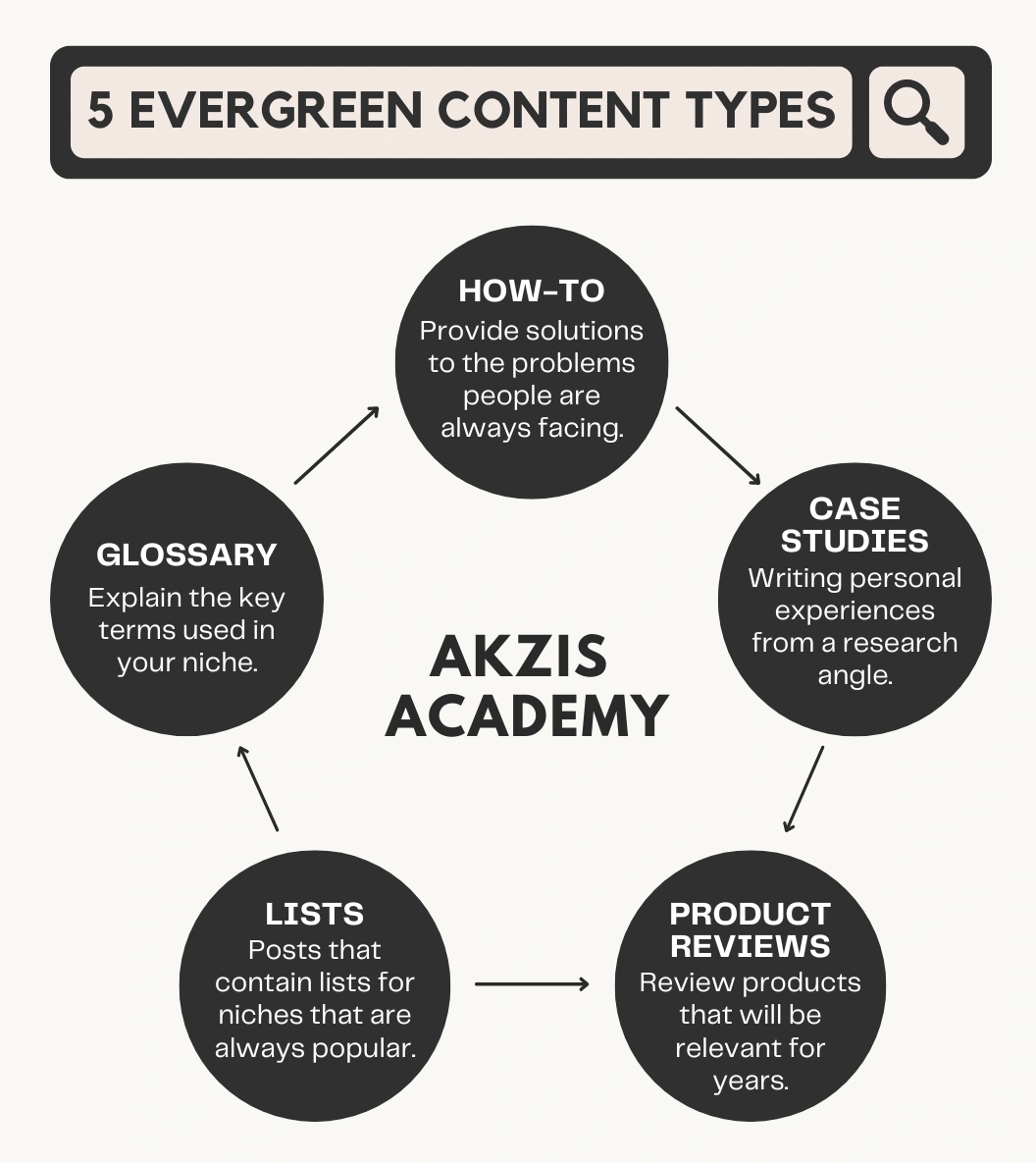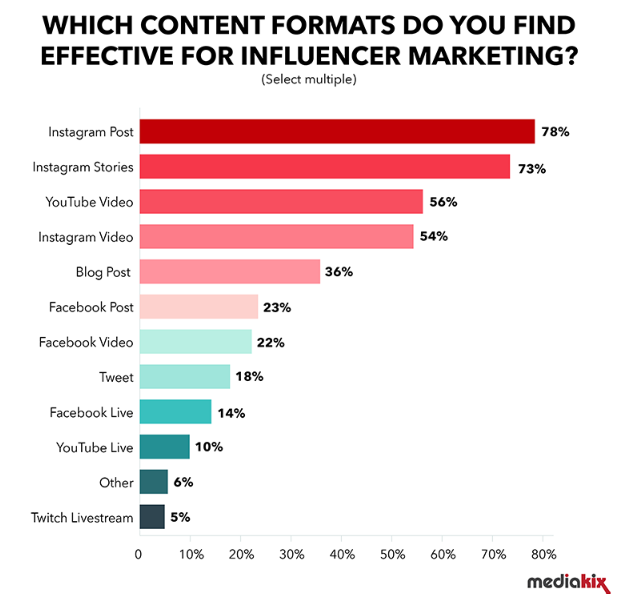Creating a killer content marketing strategy is essential for any business looking to attract and retain customers with valuable content. Content marketing has become a key promotional tool, allowing businesses to reach potential customers through multiple channels and build relationships with them.
At the core of any successful content marketing strategy is the creation of content that appeals to a specific target audience to help “pre-sell” them on the types of products or services you sell.
To achieve this, business owners should take the time to understand the needs and interests of their target audience and create content that meets those needs.
This report will explore the three key components of creating a successful content marketing strategy: understanding your audience, creating quality content, and measuring results.
These components are elaborated on and spread out in different areas for content marketers to have a better understanding of each. If you’re looking for something specific, skip to it by clicking on the question you need answered!
Choose A Question & Get An Answer
What content marketing trends have been emerging in the past year?
Content marketing has been on the rise in the past year as businesses seek to engage their customers and provide them with practical value. A recent study by the Content Marketing Institute found that marketers are increasing their content marketing spending year after year. This rapid rise in content marketing activity has given rise to several trends that’ve been emerging over the last few years.
One such trend has been the increased focus on visual content. This includes the use of images, infographics, and videos, which allow marketers to communicate their message in a more engaging and memorable way. This type of content is used to engage customers, attract new audiences, and increase brand awareness. Visual content is particularly effective in helping to capture and maintain the attention of consumers, who may be bombarded with an ever-increasing flow of information.
Another emerging trend has been the use of interactive content. Content marketers have been producing interactive pieces, such as polls and quizzes, designed to engage and entertain readers. This type of content also helps to build relationships with customers, as they’re encouraged to interact with and provide feedback on the content. Additionally, interactive content has been proven to be more effective in driving conversions and generating leads.
A third trend has been in the use of content curation. Content curation is the process of finding, organizing, and sharing content from various sources that are relevant to a particular topic. This type of content can be a great way to provide customers with an authoritative source of information while at the same time helping to build a strong brand presence. Content curation can also help to establish the marketer as a thought leader in their industry and can help speed up the content creation process.
Finally, personalized content has been increasing in popularity in the past year. Marketers are now able to use data to create content that is more relevant to their customers. This type of content can be more effective in engaging customers, as it allows them to feel that the content is tailored specifically to them.
Overall, content marketing is becoming increasingly important in today’s digital landscape. By understanding and leveraging these emerging trends, marketers can ensure that their content is engaging and effective in reaching their target audience.
What are the benefits of creating content that is valuable to customers?
Creating valuable content for customers is one of the most effective ways to attract and retain them.
Content marketing is a strategy that involves creating, distributing, and promoting content to reach potential customers and build relationships with them. It has become an important tool for businesses in all industries, as it helps them to build brand awareness, increase website traffic, and generate leads.
Content valuable to customers helps build trust between the business and its customers. It’s important to create informative content of high quality to develop an engaged customer base. Informative and engaging, or even shocking, content will encourage customers to come back for more and ultimately lead to customer loyalty.
Providing valuable content can also establish the business as a trusted source of information, which helps to build customer relationships.
Content that’s valuable to customers can also help businesses to generate leads.
Content marketing can drive targeted traffic to the business website and potentially convert those visitors into leads.
Content can also be used to further engage the customer by providing additional useful information they may need in their decision-making process. Offering content that’s both informative and valuable can help to nurture leads and eventually convert them into customers.
Creating content that’s valuable to customers is an important part of any successful content marketing strategy. It helps businesses build customer relationships, increase website traffic, and generate leads. By providing customers with valuable and engaging content, businesses can create repeat customers, resulting in increased revenue and growth.

How can content marketing be used to build customer relationships?
Content marketing is a key tool for building strong customer relationships. Companies can build relationships with their customers in an ever-changing digital landscape by ensuring that customers have access to relevant, engaging content.
“Content marketing” is the practice of creating and distributing valuable, relevant, and consistent content to attract and retain a clearly defined audience to drive profitable customer action. Through content marketing, businesses can inform, educate, and engage their audiences, building customer relationships. Content marketing allows companies to approach marketing in a way that fosters trust and loyalty while building relationships through storytelling and content creation.
For content marketing to be successful, it must be part of an overall marketing strategy. To get the most out of content marketing, it should be planned, tracked, and measured.
- What content is getting the most views?
- What’s generating the most sales?
- What are customers reacting to and engaging with the most?
Content marketing requires a clear understanding of the customer, their needs, and their interests. Companies must also take into account their audience’s current level of knowledge about their subject.
Content marketing should also be tailored to the target audience. By understanding the customer, companies can create content that resonates with them and speaks to their needs. Companies should tailor content to their audience’s preferences, level of expertise, and interests. By doing so, companies can build trust and loyalty among their customers.
Content marketing can also be used to increase brand awareness and visibility.
Through content marketing, companies can build customer relationships through storytelling, creating conversations, and engaging customers on social media. By creating shareable content, companies can increase brand visibility, reach a larger audience, and create positive customer experiences.
Content marketing is an effective way to build relationships with customers and create a lasting impression. By creating relevant and engaging content, companies can increase customer loyalty and build meaningful relationships with their customers.
What strategies can be used to ensure that the content being produced is high-quality and effective?
Content marketing is a strategy used by businesses to increase their visibility, build relationships with customers, and create loyalty to their brand. It’s an effective way to reach a wide audience and get them interested in engaging with the business.
However, for content marketing to be successful, the content must be of high quality and effective. The following strategies can be used to ensure that the content being produced is high-quality and effective:
1. Understand your audience and their needs
One of the first steps when crafting content for a specific audience is to identify the target audience. Content marketers should consider questions such as:
- Who’s the content intended for?
- What’s the purpose of the content?
- Who’s most likely to engage with the content?
Answering these questions will help to create a clearer picture of the target audience and their needs.
This involves researching the audience, what they’re looking for, and how they want to consume the content. Through this research, content marketers can determine their target audience’s demographic and psychographic profiles, as well as their needs, interests, and pain points.
Additionally, content marketers can use keyword research tools to gain insights into the language and phrases their target audience uses. Knowing this will help the content marketer create content that will resonate with the audience and provide them with the necessary information.
Some keyword research tools that we can recommend are Ahrefs, KeySearch, and Semrush.
Understanding one’s audience and their needs is an important strategy in producing impactful and effective content, especially for content marketers. By taking the time to understand and empathize with the people who will be consuming the content, content marketers can create content that’s tailored to their needs and interests, which can have a major impact on the success of the content.
2. Focus on quality over quantity
Focusing on quality over quantity is a key strategy that content marketers should implement to ensure that their content is effective and high-quality.
In a world of digital content that’s often saturated with redundant, low-quality pieces, content marketers must remain mindful of the quality of what they’re producing. Low quality content is one of several of the biggest mistakes content creators and marketers make these days… but it’s the top one!
Quality content that is thoughtfully crafted and provides value to readers is more likely to be shared, liked, and discussed.
Content marketers should focus on creating fewer pieces of content but ensuring that each one is well-crafted and high-quality. This will help to ensure that the content being produced isn’t just ‘filling space’ but is effective and engaging.
Content creators should take the time to ensure that their content is well-written and contains accurate and helpful information. The content should also be optimized for various search engines, making it more likely to appear higher in search engine results. This is especially important for content intended to draw in potential customers.
Pro-tip: Use the LanguageTool browser extension to easily review and revise your content even while you’re working at it.
3. Use different forms of content
Producing high-quality content is an essential part of successful content marketing. By utilizing different forms of content, content marketers can ensure that their efforts are more effective and successful.
The most common types of content used in content marketing include text, images, video, and audio. Each type of content has its own strengths and weaknesses, and content marketers must consider these when deciding what kind of content to produce.
Content marketers should consider these types of content when planning their content marketing strategy. By using a variety of content types, content marketers can ensure that their content is more engaging and effective.
4. Track and analyze results
Tracking and analyzing results is an essential strategy for content marketers to ensure that their content is high quality and effective. Content marketing is delivering content that provides value to customers while also achieving the content creator’s objectives.
Content can range from blog posts to webinars, from videos to podcasts, and from infographics to ebooks.
Each type of content requires different strategies for creating and delivering, and tracking and analyzing results is a key component for success.
Tracking and analyzing results allows marketers to measure the effectiveness of their content.
Marketers can determine what works well by monitoring the performance of different pieces of content and then adjusting their strategy accordingly. This can include changes to topics, the types of content created, or the delivery methods used. Tracking and analyzing results also gives marketers insight into their audience’s preferences.
Through analytics, marketers can learn which topics and types of content their target audience is most interested in, which can be used to create more relevant and engaging content.

By following these strategies, businesses can create effective content marketing campaigns that will reach their target audience and increase visibility. Content marketing is an effective way to build relationships with customers and increase loyalty to the brand.
How important is it to publish content consistently?
The importance of consistently publishing content can’t be overstated.
Content marketing is an ever-evolving industry, and it’s essential to stay up to date with the latest trends and technologies if businesses are to succeed. Keeping a steady stream of content allows companies to remain competitive in the marketplace, reach their audiences, and stay relevant.
Publishing content consistently builds relationships with customers and establishes credibility. It allows businesses to build trust and loyalty with their audiences, who can come to expect ongoing content from them.
Regularly updating content boosts SEO efforts, as Google and other search engines are more likely to prioritize fresh content. This helps draw more organic traffic to your website and increase brand awareness.
From a marketing perspective, content needs to be interesting, engaging, and relevant to be successful. Consistent publishing allows businesses to create a regular dialogue with their audiences and keep them informed. This could be done through blog posts, social media, newsletters, or other online channels.
Creating a schedule for content production is a great way to ensure that content is being published on a regular basis. Companies can plan out topics and decide when they should be published, giving them enough time to create quality content. This can be done weekly, bi-weekly, or even monthly, depending on the business’s specific needs.
How can you identify the right topics to create content around?
Creating content in the digital landscape can be a daunting task for content marketers. Knowing how to identify the right topics to create content around is key to success.
The first step in identifying the right topics to create content around is to understand your target audience. Content marketers should look to their target audiences to determine what topics are interesting, relevant, and likely to generate engagement. This can be done by conducting audience research and analyzing data from social media, surveys, and focus groups. By understanding what topics customers are passionate about, content marketers can craft content to meet their needs.
Second, content marketers should pay attention to market trends when selecting topics. Keeping an eye on popular topics in the digital world can help content marketers identify trends that could lead to successful content.
Content marketers should also consider current events and industry news to ensure their content is timely and relevant.
Third, content marketers should consider the types of content they’ll be creating. Different types of content require different topics. For example, blogs are best suited for topics related to current events, while videos are often more effective for topics related to tutorials and how-tos.
Additionally, content marketers should consider the types of content that their target audiences prefer, as this may influence the topics that are chosen.
Finally, content marketers should keep an eye on their competitors’ content. Monitoring competitors’ content can help marketers identify topics that are likely to draw engagement. Content marketers should also look to their competitors’ content for inspiration.
By keeping these tips in mind, content marketers can identify the right topics to create content around. This can help marketers create engaging, relevant, and successful content.
What types of content should be prioritized when crafting content marketing strategies?
Content marketing is a process whereby businesses create content that’s relevant and helpful to their target audience to generate leads or create brand awareness.
Crafting an effective content marketing strategy requires businesses to consider various factors, such as the type of content that should be prioritized. Different types of content have different benefits, so it’s important to select the most appropriate type of content for each goal.
The most obvious type of content to prioritize is educational content, such as blog posts, white papers, ebooks, and videos. Educational content allows businesses to give their target audience a better understanding of their product or service and to provide useful tips and advice that can help them make better decisions.
For example, a car dealership could create an ebook on how to buy a car, or a marketing agency could create an ebook on the basics of content marketing. Educational content is a great way to build trust with potential customers and shows that your business is knowledgeable and has their best interests in mind.
Another important type of content to focus on is entertaining content. This type of content is designed to engage people and make them laugh, cry, or think. It can be used to build relationships with customers, as well as to generate leads.
For example, a restaurant could create a humorous video about its food, or a pet store could create an emotional video about its animals. Entertaining content can be used in combination with educational content to further engage customers and keep them coming back.
Finally, news-based content is another type of content that businesses should consider. This type of content is designed to keep customers up to date on the latest industry news, new product releases, or company developments. News-based content can be used to build credibility, as well as to encourage customers to take action or make a purchase.
For example, a clothing retailer could create a blog post about the latest fashion trends, or a software company could create a blog post about their latest product release.
Content marketing is an important part of any business’s marketing strategy. You can create all these types of content quickly and easily nowadays with the help of AI writing tools like ChatGPT.

How can you optimize content for maximum visibility and engagement?
Content optimization is ensuring that content or a website is visible, relevant, and engaging to its intended audience. This is an important process for any content marketer, as it can help a website or content piece reach its intended audience and attract more attention, visits, and, ultimately, higher engagement and conversions.
Content optimization is about more than just search engine optimization (SEO). It’s about a holistic approach to content creation and marketing and includes things like:
- Proper keyword research, SEO optimization, and analytics
Content optimization is a multi-faceted process, though some of the most important aspects include keyword research, SEO optimization, and analytics.
Proper keyword research is essential for content optimization, as it helps content marketers understand the search terms their target audiences use to find content. This information can then be used to create content that specifically addresses these search terms. SEO optimization involves optimizing the content, such as ensuring that the page titles, headlines, and body content are optimized for search engine visibility.
Finally, analytics are important for understanding how content engages with the audience and which changes can be made to increase engagement further.
- Content formatting
Another important aspect of content optimization is formatting. Many online audiences prefer content that’s formatted in an attractive and easy-to-digest way.
This might include using headings to break up the text, adding visuals such as images and videos, and using bullet points to make the content easier to scan.
All these elements can help make the content more engaging and improve the chances of it appearing in search engine results.
- Maximizing social reach
Social media is an important part of content marketing. Content marketers should use social media to promote their content and get it in front of as many people as possible.
How can content marketers take advantage of social media to engage potential customers and attract more followers?
Content marketers are increasingly turning to social media as an effective way to reach potential customers and build a larger following. Social media provides a powerful platform to engage with customers and generate leads. Content marketers can use social media to drive website traffic, increase brand awareness, and engage with customers and potential customers in meaningful conversations.
The best way for content marketers to take advantage of social media is by creating and promoting content. Content marketers can create their content or leverage content from other sources. Content can include blog posts, videos, infographics, and other interactive content.
This content should be tailored to the interests of the target audience and should be engaging and informative. Content marketers should also make sure to include relevant keywords so that potential customers can find the content more easily.
Content marketers should promote the content on their social media channels, including:
Content marketing is an effective way for businesses to reach their target audience and attract more customers.
One of the most popular and powerful tools for this purpose is Facebook. With its massive user base and capabilities, businesses can easily connect to their customers, engage with them, and build relationships.
The key to using Facebook as an effective content marketing tool is to understand how to use its various features to engage potential customers and attract more followers.
First, make sure that your page is optimized for the content. This means having a clear, informative page title, a profile picture consistent with your page’s theme, and a catchy description of the page that will make readers want to learn more about it.
Additionally, post relevant and interesting content to your target audience regularly. This could include videos, articles, images, or even polls.
Now, engage with your followers by encouraging comments, responding to questions, and offering helpful information!
Second, use Facebook as a platform to promote your content. This can be done by using the “Share” button to promote content on your page, or the “Promote” button to create ads targeting specific groups of people. Additionally, consider using sponsored posts to increase the reach and visibility of your content.
Finally, measure your content’s performance. This can be done using the “Insights” feature on Facebook to measure post engagement and reach. Additionally, take advantage of A/B testing to determine what content is most engaging for your audience.
By following these steps, businesses can effectively use Facebook as a content marketing tool and reach their target audience to attract more customers.
With so many social media channels to choose, it can take time to determine which will be the most beneficial to content marketers. Instagram is one of the most popular social media channels and can be an effective tool for content marketers to reach new customers and increase their following.
To effectively use Instagram as a content marketing tool, marketers must first understand the platform’s unique features and how they can be used strategically. Instagram is a visual platform, meaning visuals are the main draw.
Visually appealing content will draw users in, and it’s important to remember that images are processed much faster than text, so visuals are key. Content marketers should use high-quality images that capture the eye and excite viewers. Instagram also offers Stories and Live video features, which can be used to share behind-the-scenes content and create an authentic connection with potential customers.
Finally, content marketers should be active on Instagram and respond to comments, likes, and messages.
Consistently engaging with users builds trust to establish a loyal following and increase engagement and conversions.
By leveraging the platform’s features, content marketers can use LinkedIn to engage potential customers and attract more followers. One of the most powerful features is the ability to create company pages. With this, content marketers can create a page that provides information about their company and its services and products. Additionally, they can directly link to their website, blog, and other online assets.
Another useful feature is the ability to customize the page with images, text, and video. This allows content marketers to showcase their company’s brand, services, and products. It also allows them to create a more personal touch with potential customers.
Content marketers can also use LinkedIn’s targeting and segmenting features, which enable them to target specific audiences and ensure that the right people see their content.
Furthermore, they can leverage LinkedIn’s Groups feature, which allows content marketers to create and join groups relevant to their target audience.
This allows them to build relationships with potential customers and create a sense of community and loyalty among the group members. Content marketers can then promote their services and products through the group and engage with potential customers in discussions.
LinkedIn provides content marketers with a powerful platform to engage potential customers and attract more followers. By leveraging the platform’s features, content marketers can create a strong presence on the platform and drive more traffic to their website and other online assets.

What factors should be considered when segmenting content for different audiences?
When creating content for different audiences, it’s important to consider a wide variety of factors that can influence the effectiveness of the content.
Segmenting content for different audiences considers the different needs and interests of each target audience, ensuring that the message is tailored to each group.
Here are some key factors to consider when segmenting content for different audiences:
- Audience characteristics. When segmenting content for different audiences, it’s essential to understand each target audience’s needs, interests, and characteristics. Consider the age, gender, education level, cultural background, and other demographics of the audience, as well as their motivation for consuming the content. Knowing the audience’s level of familiarity with the topic is also important – is it an expert or a lay audience?
- Content type. Content type plays a major role in audience segmentation. For example, if you’re targeting a younger audience, you may want to create more visual and interactive content, such as videos or infographics. Text-based content may be more appropriate if you’re targeting experts in the field.
- Tone and style. Tone and style can be incredibly important when segmenting content for different audiences. You want to ensure that you use the right language, tone, and style for each target audience. For example, you may want to use a more playful and light-hearted tone for a younger audience, while using a more serious and authoritative tone for a professional audience.
- Content platform. Content platforms can also influence the effectiveness of content for different audiences. For example, users on social media platforms may be more likely to engage with content that’s more visual and interactive, while users on professional websites may be more likely to engage with text-based content. Knowing which platforms, the target audience uses can help you create content that’s better suited for the platform.
By considering these key factors when segmenting content for different audiences, you can ensure that your content is more targeted and effective and resonates better with each target audience.
What approaches can you use to ensure that content is aligned with a brand’s overall goals?
Creating content aligned with a brand’s overall goals is essential for success. To guarantee that content is aligned with a brand’s overall goals, there are a few approaches that content marketers can take.
Developing a concise content strategy is one of the most effective approaches to ensure that content is aligned with a brand’s goals. Such a strategy should clearly outline the purpose of the brand’s content, the target audience, and the objectives that need to be achieved.
Additionally, the content strategy should incorporate the overall message and tone of the brand so that all content produced adheres to this. This helps to ensure that all content produced by the brand is consistent and on-brand.
The second approach is to set specific goals for each piece of content that’s produced. Content marketers should determine the desired outcome for each article, blog post, video, etc., before publishing it.
This helps content marketers ensure that each piece of content is created with a purpose in mind and contributes to the brand’s overall goals. Additionally, setting specific goals helps measure the content’s success and provides feedback to content creators.
The final approach to ensuring that content is aligned with a brand’s overall goals is to create a content calendar. A content calendar is a roadmap for content creators and outlines when and how often content should be created. Additionally, it can guide content creators regarding topics to cover.
This can help to ensure that content is created on a regular basis, is timely, and is aligned with the brand’s goals.
By following these approaches, brands can ensure that the content they create and publish is aligned with their goals and contributes to their overall success.
What creative ways can content marketers use to stand out from the competition?
As content marketers, it’s important to stay up-to-date on the latest trends and keep a finger on the pulse of what’s working now. In addition, content marketers should also be looking for creative ways to stand out from the competition.
The first way to stand out from the competition is to focus on creating truly unique content. It’s important for content marketers to go beyond traditional content marketing tactics, such as blogging and social media, and create content that’s truly different from anything else out there.
Content should be thoughtfully crafted and specifically targeted to the audience. In addition, content marketers should strive to create content that stands out from the noise and engages readers in meaningful ways.
In addition, content marketers should also consider developing content partnerships.
Developing relationships with other content creators or influencers can help increase content’s reach and impact. Content partnerships can also help create unique content and drive engagement.
Finally, content marketers should focus on creating experiences tailored to the audience. Content should be tailored to the audience’s specific needs, wants, and interests in order to be more effective. Content should also be crafted in a way that connects with the audience on an emotional level, which can help to increase engagement levels meaning… more shares.
By staying up to date on the latest trends, creating unique content, leveraging the latest technology, developing content partnerships, and crafting content that speaks to the audience, content marketers can stay ahead of the competition and create more impactful and engaging content.
What techniques can be used to collect feedback from customers and use it to influence future content marketing efforts?
Customer feedback is a powerful and valuable tool for informing and improving content marketing efforts. Content marketers need to be able to gather customer feedback and use it to inform their decisions, create better content, and make more effective campaigns.
There are several techniques that can be used to collect customer feedback and use it to improve content marketing efforts.
One of the most common methods is to use surveys. Surveys allow content marketers to collect detailed information from customers about the content they consume, their opinions on the content, and what changes they’d like to see. Surveys can be conducted online or in person and should be tailored to the company’s specific needs or products.
For example, an online survey could ask customers about their experience with a particular product or service, while an in-person survey could ask customers about their preferences for a particular type of content.
Surveys can also be used to track customer sentiment over time, allowing content marketers to make changes and adjustments accordingly.
Another technique for collecting customer feedback is through customer interviews. This is a great way to get a more personal and in-depth look at the customer’s experience.
Content marketers can use customer interviews to gain insight into customer preferences, the effectiveness of their campaigns, and what changes customers would like to see.
Customer interviews can also be used to gain a better understanding of customer problems and unmet needs, which can help inform future content campaigns.
Content marketers can also leverage social media to collect customer feedback.
Social media can be used to ask customers for content feedback or simply monitor the sentiment surrounding a particular brand or product. This type of feedback often comes in the form of comments or reviews, providing content marketers with an invaluable source of customer feedback.
You can use social media channels like Facebook and Twitter/X to create polls that can be publicly accessed by your target audience.
By utilizing customer feedback and utilizing it to inform content marketing decisions, content marketers can maximize their efforts and create content that resonates with their customers. Customer feedback is an invaluable tool for content marketing and should be fully used possible.
What tools can you utilize to make content creation easier and more efficient?
Content creation stands at the heart of a valuable marketing strategy.
Beyond creativity and skill, leveraging specialized tools can amplify your efficiency and enhance the overall quality of your output. All while making the process easier and much faster for you!
Here’s an inventory of tools that can be your content marketing and creation ally:
- Essential Content Creation Tools:
- Writing Platforms: Tools like Google Docs or Microsoft Word provide collaborative features and a range of editing tools.
- Visual Editors: Software like Adobe Photoshop or Canva for designing engaging images or infographics. For videos, Adobe Premiere Pro or Final Cut Pro are popular choices.
- Podcasting Tools: Audacity and Anchor are beneficial for those looking to dive into the world of audio content.
- Content Collaboration & Scheduling: Platforms like Buffer for social media posting and Trello for content calendar organization facilitate seamless teamwork and planning.
- Research Tools to Augment Content Relevance:
- SEO Tools: Utilize platforms like SEMrush or Ahrefs for keyword research and insights, ensuring your content aligns with search trends.
- Industry Insights: Regularly review industry surveys, reports, and carry out competitor analysis to stay ahead of the curve.
- Trending Content Trackers: Tools such as BuzzSumo help identify what’s currently capturing attention in your niche.
- Content Management Systems (CMS): A CMS organizes your content hub, offering ease in sharing, distribution, and modifications.
- Popular CMS Platforms: WordPress stands out due to its versatility, while Drupal and Joomla also offer robust features tailored for different needs.
- Harnessing the Power of Analytics:
- Tools like Google Analytics and Tableau offer deep insights into content performance, from audience behavior to engagement metrics. Using these insights helps in refining strategies and optimizing results.
Remember, as pivotal as content creation is in marketing, the journey from ideation to publication is made infinitely more streamlined with the right toolkit. Equip yourself wisely and watch your content thrive.
What metrics should content marketers focus on to measure success and evaluate the performance of their marketing strategy?
Content marketing is a powerful tool for driving traffic, generating leads, and building brand awareness. For content marketing efforts to be successful, content marketers need to track the right metrics and evaluate their performance.
Knowing which metrics to focus on can be essential for understanding how well a content marketing strategy is performing and how it can be improved.
For content marketers, the most important metrics to focus on when evaluating the performance of their marketing strategy include website traffic, conversions, engagement, and return on investment (ROI).
1. Website traffic
Website traffic is a key metric for measuring the success of a content marketing strategy. By tracking website traffic, content marketers can easily gauge how effectively their content engages potential customers and drives them to their website.
Content marketers should track the total number of visitors to their website and the average time spent to better understand their content’s performance. Additionally, content marketers should also take note of the sources of their website traffic.
This will help them understand which channels are most effective in driving website traffic and can help inform their content strategy.
The most common tool is to use Google Analytics.
2. Conversions
Conversions are an important metric for measuring the success of a content marketing strategy. Conversion rate is the percentage of visitors who take action, such as filling out a form or making a purchase.
Content marketers should track the conversion rate of their website to understand how successful their content is at converting visitors into customers or leads.
3. Engagement
Engagement is another key metric that content marketers should track to measure the success of their content marketing strategy.
Engagement metrics include website visits, time spent on the website, and the number of page views. Content marketers should monitor these metrics to understand how users interact with their content and how well it resonates with their audience.
4. Return on Investment (ROI)
The last metric content marketers should track return on investment. Return on investment is the measure of how much a content marketing strategy generates in profit compared to the amount of money spent on it. Content marketers should track ROI to understand how effective their content marketing efforts are and to make sure that their efforts are providing an adequate return on their investments.
You can check all these metrics out using SEO tools mentioned in the former part of this report, namely Ahrefs and Semrush. Let’s try checking the metrics of Target’s website.

This is basically the overview of Target’s website traffic and traffic value in Ahrefs. You can do this by just entering the domain of a site and Ahrefs will give you all the information.
Conclusion
Content marketing is an essential part of any successful marketing strategy. It has the potential to attract and retain customers through valuable content.
Furthermore, content marketing can help to establish a business’s reputation, differentiate it from its competitors, and increase brand awareness.
Creating a killer content marketing strategy is essential for any business or organization that seeks to attract and retain customers.
Content marketing is the act of creating and distributing content—including videos, articles, infographics, and more—with the aim of providing valuable information to potential and current customers.
Content should be created with the goal of providing value to the customer—not just pushing a sale or service.
Quality content should provide solutions to the customer’s needs and problems, as well as educate them and inspire them to take action.





